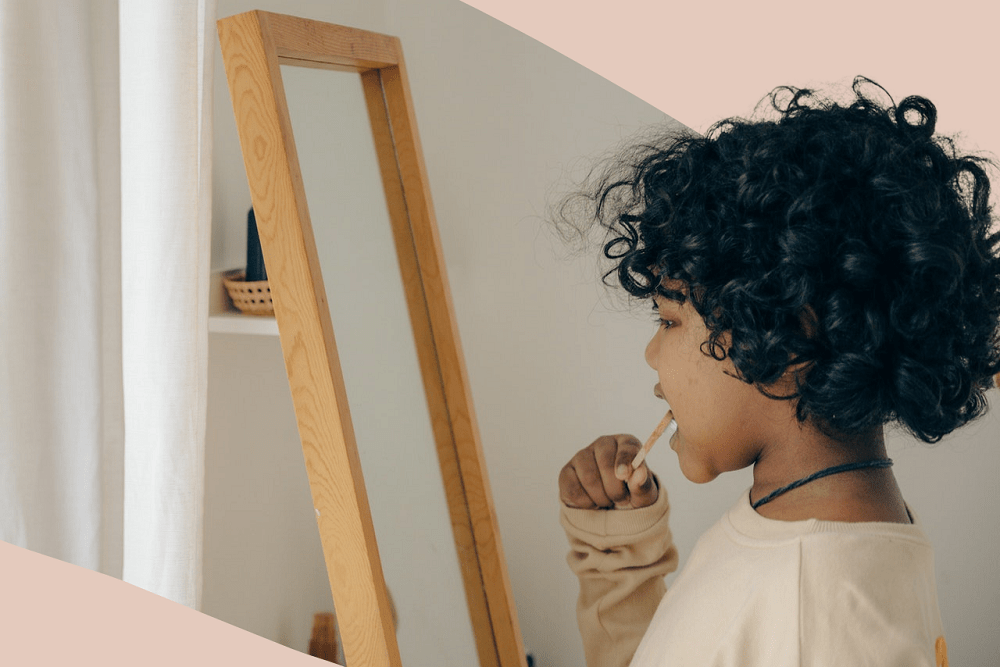If you’re a parent, then you’ll already know that among the most important things to do for your children’s dental health is brushing their teeth twice a day with toothpaste, and a little later by using floss. But brushing alone isn’t enough – there are some other tips on hygiene that will help ensure they have healthy teeth as they grow up. Here’s how you can look after your children’s teeth.
TO ESTABLISH GOOD HABITS, START EARLY
When babies first come into the world, their gums and teeth are soft and vulnerable to tooth decay and damage, so it’s essential that when establishing good habits, you are gentle but instructive.
Teach them how to brush properly (from a young age) by brushing your own teeth with them at night or before bedtime. You can even have them brush your teeth to show them what a good job looks like! This way, they’ll learn how it’s done and will know the right technique.
It’s generally not considered necessary to start flossing a child’s teeth until they fit closely together, between the ages of two and six. Teaching both good brushing technique and regular flossing from a young age will help your child grow up with good dental hygiene habits, and the easier it will be for them as adults!
LIMIT CERTAIN MEALS AND DRINKS
The food and drinks we ingest daily can play a huge role in our dental health, and if you want your children to have the healthiest teeth possible, it’s important to limit certain foods and drinks from their diet.
Ideally, you should limit your child’s consumption of fizzy drinks, soft drinks and juices because these things are full of acid that will erode tooth enamel over time. You’ll also want to avoid giving them food with lots of sugars as these can lead to tooth decay. A little caution should be exercised regarding starchy carbohydrates like rice, bread and pasta, too.
If you want to ensure they’re getting the best nutrition possible, stick with healthy foods that provide lots of vitamins and minerals.
VISIT THE DENTIST
As the Guardian explains, “Children need to see a dentist once they have milk teeth. The dentist will then suggest follow-ups – usually between three months and a year. If you wait until your child is about to go to school you should expect your dentist to look askance”.
As such, it’s essential that you visit the dentist with your children early on in their life, to get them in the system, as it were, and set the course in motion for regular check-ups.

SPECIAL BRUSHES
You can buy toothbrushes with soft bristles and small heads (made for children’s mouths), as well as interdental brushes like floss sticks that give your kids everything they need to stay on top of their dental hygiene. You can also invest in toothpaste with fluoride (for children over the age of two). Mouthwash to ensure they’re getting rid of all bacteria, both on their teeth and gums.
If you’re looking for dental hygiene equipment that the whole family can use, then look into electric toothbrushes with different brush heads (for adults and children). These are more powerful than manual brushes and will give everyone cleaner teeth when used right.

MAKE IT FUN
You don’t want to make your children dread going to the dentist, as that can lead to many problems later down the line. Instead, focus on making their dental hygiene fun.
For example, you can use different colours and flavours for toothpaste or mouthwash – this way, they’ll look forward to brushing their teeth every night before bedtime for the kaleidoscope of colour that awaits them in the sink. You could even turn it into a game, where they have to brush their teeth for a certain amount of time without you telling them.
You can also reward your children with healthy snacks after they’ve brushed and flossed their teeth (and used mouthwash) every day – this will ensure that good dental hygiene becomes something they want to do. Dentists do recommend you wait for half an hour after brushing your teeth to eat, however.
THE BOTTOM LINE
Parents should teach their children how to take care of their teeth right away. The sooner they learn good dental hygiene techniques, the better.
*This article is not intended to replace medical or dental advice, diagnosis or treatment given by a qualified health professional.*





